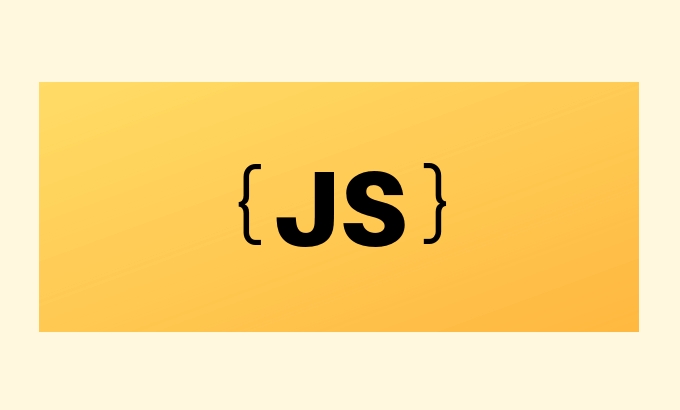The bfcache experience is greatly affected by JavaScript. The key to optimization is to avoid using unload and beforeunload events, properly handle page recovery status, and reduce global side effects. First, you should avoid using the unload event and use visibilitychange or pagehide to process the hidden logic of the page; second, in the pageshow event, check whether the page is restored from the cache, and reset the state of carousel, timer, network check, etc.; finally, avoid global one-time side effects and singleton dependencies, and use a modular way to implement repetitive initialization components, thereby improving the smoothness of page switching and improving user experience.

JavaScript optimization has a direct impact on the browser's Back-Forward Cache (bfcache) experience. Many developers ignore this when building web pages, resulting in the problem of page loading stuttering or even white screen when using the browser's "Back" or "Forward" buttons. In fact, optimizing JavaScript to improve the performance of bfcache is not complicated. The key is to understand the browser's caching mechanism and make corresponding adjustments.

What is bfcache?
bfcache is a caching mechanism designed by the browser to improve user experience. When you click the "Back" or "Forward" button, the browser does not reload the entire page, but restores the page state from the cache, including JavaScript execution state, DOM structure and style, etc. This mechanism can significantly speed up page switching and reduce server requests.
But the problem is that if the JavaScript in the page is not processed properly, there may be problems such as functional abnormalities and event listening failure when the page is restored.

Avoid unload and beforeunload events
These two events are often used to clean up resources or send logs, but they prevent the browser from putting the page into bfcache. Especially the unload event, once registered, the page cannot be cached.
- suggestion :
- Try to avoid using
unloadand usevisibilitychangeorpagehideevents to handle the logic when the page is hidden. - If you have to use
beforeunload(for example prompting the user to leave the page) make sure it does not block the page recovery.
- Try to avoid using
document.addEventListener('visibilitychange', () => {
if (document.visibilityState === 'hidden') {
// Perform cleanup or log sending logic}
});Properly handle status updates when page recovery
Even if the page is cached, the user may need to update some status when accessing again, such as reactivate the timer, check the network connection, restore the animation, etc.

- suggestion :
- Use
pageshowevent to detect whether the page is restored from the cache. - Reset or restore the necessary state in this event.
- Use
window.addEventListener('pageshow', (event) => {
if (event.persisted) {
// The page is reinitializeSomeComponents() recovered from bfcache;
}
});- Common content that needs to be restored include:
- Carousel graph or animation (maybe stopped during cache)
- Long-running timer (such as countdown)
- Network status check (the network environment may have changed when the page is restored)
Reduce global side effects and avoid singleton dependencies
Some JavaScript code relies on the initialization logic when page loads, such as global variable assignment, one-time event binding, etc. When the page is restored from bfcache, these initialization logics are not executed again, which may cause functional exceptions.
- suggestion :
- Avoid executing one-time side effects in global scope.
- Initialize components in a modular way to ensure they can be reactivated when the page resumes.
- Instead of over-rely relying on singleton patterns when page loads, design them as repeatable initialization structures.
at last
Optimizing JavaScript to improve bfcache compatibility is actually more about following the best practices of modern web development. Although these details seem inconspicuous, they can bring significant improvements in the actual user experience. After mastering these skills, you will find that the page switching is smoother, and users will no longer complain that "the page is stuck after clicking back."
Basically that's it.
The above is the detailed content of Optimizing JavaScript for Back-Forward Cache (bfcache). For more information, please follow other related articles on the PHP Chinese website!

Hot AI Tools

Undress AI Tool
Undress images for free

Undresser.AI Undress
AI-powered app for creating realistic nude photos

AI Clothes Remover
Online AI tool for removing clothes from photos.

Clothoff.io
AI clothes remover

Video Face Swap
Swap faces in any video effortlessly with our completely free AI face swap tool!

Hot Article

Hot Tools

Notepad++7.3.1
Easy-to-use and free code editor

SublimeText3 Chinese version
Chinese version, very easy to use

Zend Studio 13.0.1
Powerful PHP integrated development environment

Dreamweaver CS6
Visual web development tools

SublimeText3 Mac version
God-level code editing software (SublimeText3)

Hot Topics
 How does garbage collection work in JavaScript?
Jul 04, 2025 am 12:42 AM
How does garbage collection work in JavaScript?
Jul 04, 2025 am 12:42 AM
JavaScript's garbage collection mechanism automatically manages memory through a tag-clearing algorithm to reduce the risk of memory leakage. The engine traverses and marks the active object from the root object, and unmarked is treated as garbage and cleared. For example, when the object is no longer referenced (such as setting the variable to null), it will be released in the next round of recycling. Common causes of memory leaks include: ① Uncleared timers or event listeners; ② References to external variables in closures; ③ Global variables continue to hold a large amount of data. The V8 engine optimizes recycling efficiency through strategies such as generational recycling, incremental marking, parallel/concurrent recycling, and reduces the main thread blocking time. During development, unnecessary global references should be avoided and object associations should be promptly decorated to improve performance and stability.
 How to make an HTTP request in Node.js?
Jul 13, 2025 am 02:18 AM
How to make an HTTP request in Node.js?
Jul 13, 2025 am 02:18 AM
There are three common ways to initiate HTTP requests in Node.js: use built-in modules, axios, and node-fetch. 1. Use the built-in http/https module without dependencies, which is suitable for basic scenarios, but requires manual processing of data stitching and error monitoring, such as using https.get() to obtain data or send POST requests through .write(); 2.axios is a third-party library based on Promise. It has concise syntax and powerful functions, supports async/await, automatic JSON conversion, interceptor, etc. It is recommended to simplify asynchronous request operations; 3.node-fetch provides a style similar to browser fetch, based on Promise and simple syntax
 JavaScript Data Types: Primitive vs Reference
Jul 13, 2025 am 02:43 AM
JavaScript Data Types: Primitive vs Reference
Jul 13, 2025 am 02:43 AM
JavaScript data types are divided into primitive types and reference types. Primitive types include string, number, boolean, null, undefined, and symbol. The values are immutable and copies are copied when assigning values, so they do not affect each other; reference types such as objects, arrays and functions store memory addresses, and variables pointing to the same object will affect each other. Typeof and instanceof can be used to determine types, but pay attention to the historical issues of typeofnull. Understanding these two types of differences can help write more stable and reliable code.
 JavaScript time object, someone builds an eactexe, faster website on Google Chrome, etc.
Jul 08, 2025 pm 02:27 PM
JavaScript time object, someone builds an eactexe, faster website on Google Chrome, etc.
Jul 08, 2025 pm 02:27 PM
Hello, JavaScript developers! Welcome to this week's JavaScript news! This week we will focus on: Oracle's trademark dispute with Deno, new JavaScript time objects are supported by browsers, Google Chrome updates, and some powerful developer tools. Let's get started! Oracle's trademark dispute with Deno Oracle's attempt to register a "JavaScript" trademark has caused controversy. Ryan Dahl, the creator of Node.js and Deno, has filed a petition to cancel the trademark, and he believes that JavaScript is an open standard and should not be used by Oracle
 React vs Angular vs Vue: which js framework is best?
Jul 05, 2025 am 02:24 AM
React vs Angular vs Vue: which js framework is best?
Jul 05, 2025 am 02:24 AM
Which JavaScript framework is the best choice? The answer is to choose the most suitable one according to your needs. 1.React is flexible and free, suitable for medium and large projects that require high customization and team architecture capabilities; 2. Angular provides complete solutions, suitable for enterprise-level applications and long-term maintenance; 3. Vue is easy to use, suitable for small and medium-sized projects or rapid development. In addition, whether there is an existing technology stack, team size, project life cycle and whether SSR is needed are also important factors in choosing a framework. In short, there is no absolutely the best framework, the best choice is the one that suits your needs.
 Understanding Immediately Invoked Function Expressions (IIFE) in JavaScript
Jul 04, 2025 am 02:42 AM
Understanding Immediately Invoked Function Expressions (IIFE) in JavaScript
Jul 04, 2025 am 02:42 AM
IIFE (ImmediatelyInvokedFunctionExpression) is a function expression executed immediately after definition, used to isolate variables and avoid contaminating global scope. It is called by wrapping the function in parentheses to make it an expression and a pair of brackets immediately followed by it, such as (function(){/code/})();. Its core uses include: 1. Avoid variable conflicts and prevent duplication of naming between multiple scripts; 2. Create a private scope to make the internal variables invisible; 3. Modular code to facilitate initialization without exposing too many variables. Common writing methods include versions passed with parameters and versions of ES6 arrow function, but note that expressions and ties must be used.
 What is the cache API and how is it used with Service Workers?
Jul 08, 2025 am 02:43 AM
What is the cache API and how is it used with Service Workers?
Jul 08, 2025 am 02:43 AM
CacheAPI is a tool provided by the browser to cache network requests, which is often used in conjunction with ServiceWorker to improve website performance and offline experience. 1. It allows developers to manually store resources such as scripts, style sheets, pictures, etc.; 2. It can match cache responses according to requests; 3. It supports deleting specific caches or clearing the entire cache; 4. It can implement cache priority or network priority strategies through ServiceWorker listening to fetch events; 5. It is often used for offline support, speed up repeated access speed, preloading key resources and background update content; 6. When using it, you need to pay attention to cache version control, storage restrictions and the difference from HTTP caching mechanism.
 Handling Promises: Chaining, Error Handling, and Promise Combinators in JavaScript
Jul 08, 2025 am 02:40 AM
Handling Promises: Chaining, Error Handling, and Promise Combinators in JavaScript
Jul 08, 2025 am 02:40 AM
Promise is the core mechanism for handling asynchronous operations in JavaScript. Understanding chain calls, error handling and combiners is the key to mastering their applications. 1. The chain call returns a new Promise through .then() to realize asynchronous process concatenation. Each .then() receives the previous result and can return a value or a Promise; 2. Error handling should use .catch() to catch exceptions to avoid silent failures, and can return the default value in catch to continue the process; 3. Combinators such as Promise.all() (successfully successful only after all success), Promise.race() (the first completion is returned) and Promise.allSettled() (waiting for all completions)






